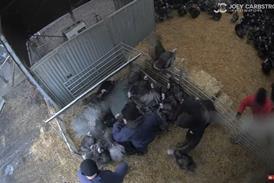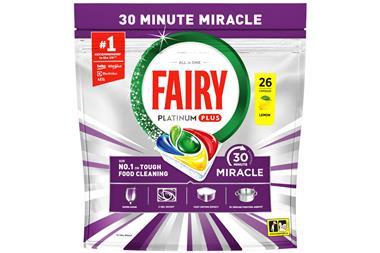Making your home smell delightfully fresh has never been easier, with automatic air fresheners appealing to a sizeable audience and sales of plug-in diffusing products growing at 16% a year
Many people simply open their window to get rid of unwanted smells, while for those who want a sweeter-smelling home, but don’t like a pot-pourri effect, odour eliminator products such as Oust are picking up share.
However, ABC1-style shoppers, who are more likely to be house proud, particularly want to portray a certain status in their homes and like a burst of fragrance, believes David Briscoe, marketing analyst at own label manufacturer McBride.
“This may change, though, as some of the new products coming through such as clicksprays and timed released air fresheners lack visual appeal but will appeal to a wider audience,” he predicts.
Air freshener sales rose 6.2% to £283m in the past year, says TNS, driven by plenty of premium new product development in recent months, particularly automatic air fresheners that release fragrance at regular intervals. Air Wick, for example, has been busy launching the battery-operated Freshmatic, which releases regular bursts of fragrance for up to two months, along with Plug-in Diffusers with essential oils. Plug-in products such as these are heavily advertised on TV and continue to dominate the market. They are worth £101m and growing at 15.5% [TNS 52 w/e September 11, 2005]. Last year Ambi Pur launched Sensor, a light-activated electrical plug-in that works during the day and switches itself off at night.
Barry Carter, category manager at Musgrave Budgens Londis, says it has seen a 15% growth in sales of electrical air fresheners at the expense of traditional stand-ups, which are down 25%, and says convenience has driven the market with a rise in sales of mobile, battery-driven products.
However, he adds: “The big winner in electrical is Air Wick with the introduction of Freshmatic, while the Ambi Pur electrical product has lost out. The brand will have to work pretty hard this year to claw back some market share.”
Many people simply open their window to get rid of unwanted smells, while for those who want a sweeter-smelling home, but don’t like a pot-pourri effect, odour eliminator products such as Oust are picking up share.
However, ABC1-style shoppers, who are more likely to be house proud, particularly want to portray a certain status in their homes and like a burst of fragrance, believes David Briscoe, marketing analyst at own label manufacturer McBride.
“This may change, though, as some of the new products coming through such as clicksprays and timed released air fresheners lack visual appeal but will appeal to a wider audience,” he predicts.
Air freshener sales rose 6.2% to £283m in the past year, says TNS, driven by plenty of premium new product development in recent months, particularly automatic air fresheners that release fragrance at regular intervals. Air Wick, for example, has been busy launching the battery-operated Freshmatic, which releases regular bursts of fragrance for up to two months, along with Plug-in Diffusers with essential oils. Plug-in products such as these are heavily advertised on TV and continue to dominate the market. They are worth £101m and growing at 15.5% [TNS 52 w/e September 11, 2005]. Last year Ambi Pur launched Sensor, a light-activated electrical plug-in that works during the day and switches itself off at night.
Barry Carter, category manager at Musgrave Budgens Londis, says it has seen a 15% growth in sales of electrical air fresheners at the expense of traditional stand-ups, which are down 25%, and says convenience has driven the market with a rise in sales of mobile, battery-driven products.
However, he adds: “The big winner in electrical is Air Wick with the introduction of Freshmatic, while the Ambi Pur electrical product has lost out. The brand will have to work pretty hard this year to claw back some market share.”















No comments yet